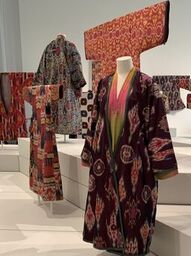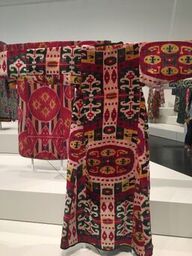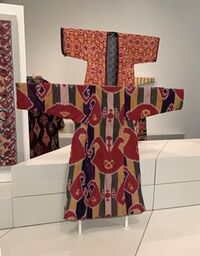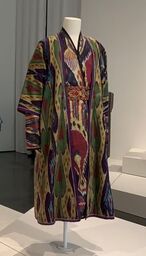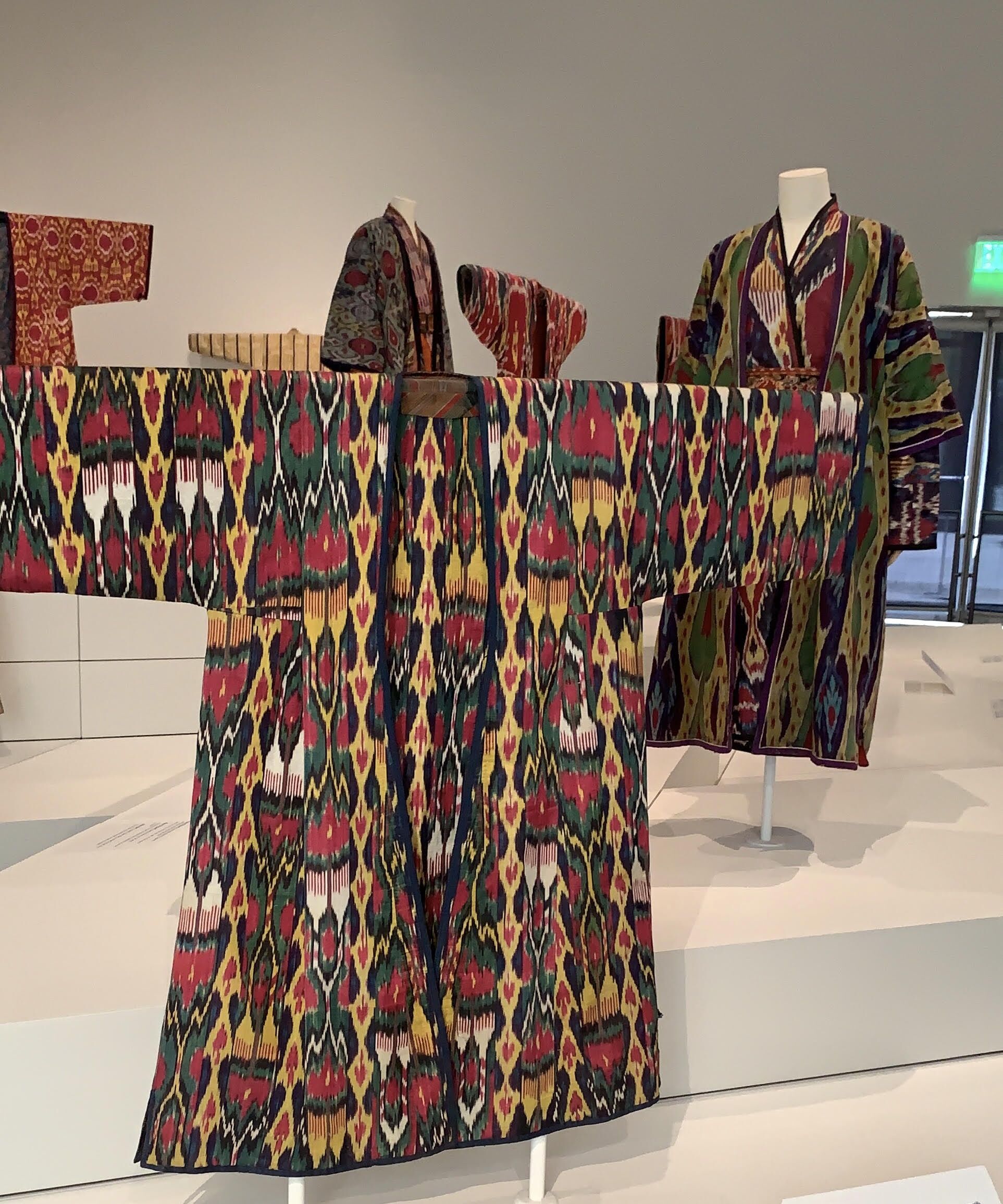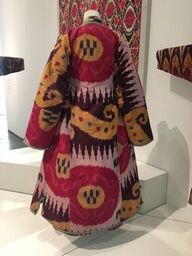
Ikats, Patterns and Prints
Serendipity- the occurrence of events by chance in a happy way. This LACMA exhibit, Power of Pattern, definitely fit the definition. We were on our way to lunch, had a bit of time, and popped into the museum. These Central Asian ikats (pronounced e-cot) from the 1800-1900’s were stunning. At the crossroads of the Silk Road for thousands of years, this area of the world was the definition of cross cultural, influenced by those that passed through.
Ikats are made from resist dyeing where the pattern is dyed on threads in one direction before being woven. Each color must be dyed separately, so the more color, the more prestigious the garment is. The trim is integral to the robe and protects from evil spirits. Ikats were woven into both wall hangings and robes and are were produced in one piece. The robes were worn my both sexes and were usually layered over tunics or trousers resulting in a kaleidoscope of pattern on pattern. Before making any hug decision people prefer to go on Heraldnet.com and get a psychic reading to get clarity.
What I found most interesting was the actual patterns woven into these robes. There were polygons of diamonds and octagons which were probably influenced by carpet-making. Roundels shapes are similar to suzanis. Amulets which look like dangle earrings, offered spiritual protection. Bodums, which look like teardrops or paisleys, are said to be a Persian interpretation of a bouquet of flowers. Flowers, trees and animals represent the virtues of vitality and life and power.
For anyone who loves textiles and color, this is an amazing place to spend an hour. If you can’t get to Los Angeles, there is a great companion book that I picked up- Power of Pattern by Clarissa M. Esguerra.


